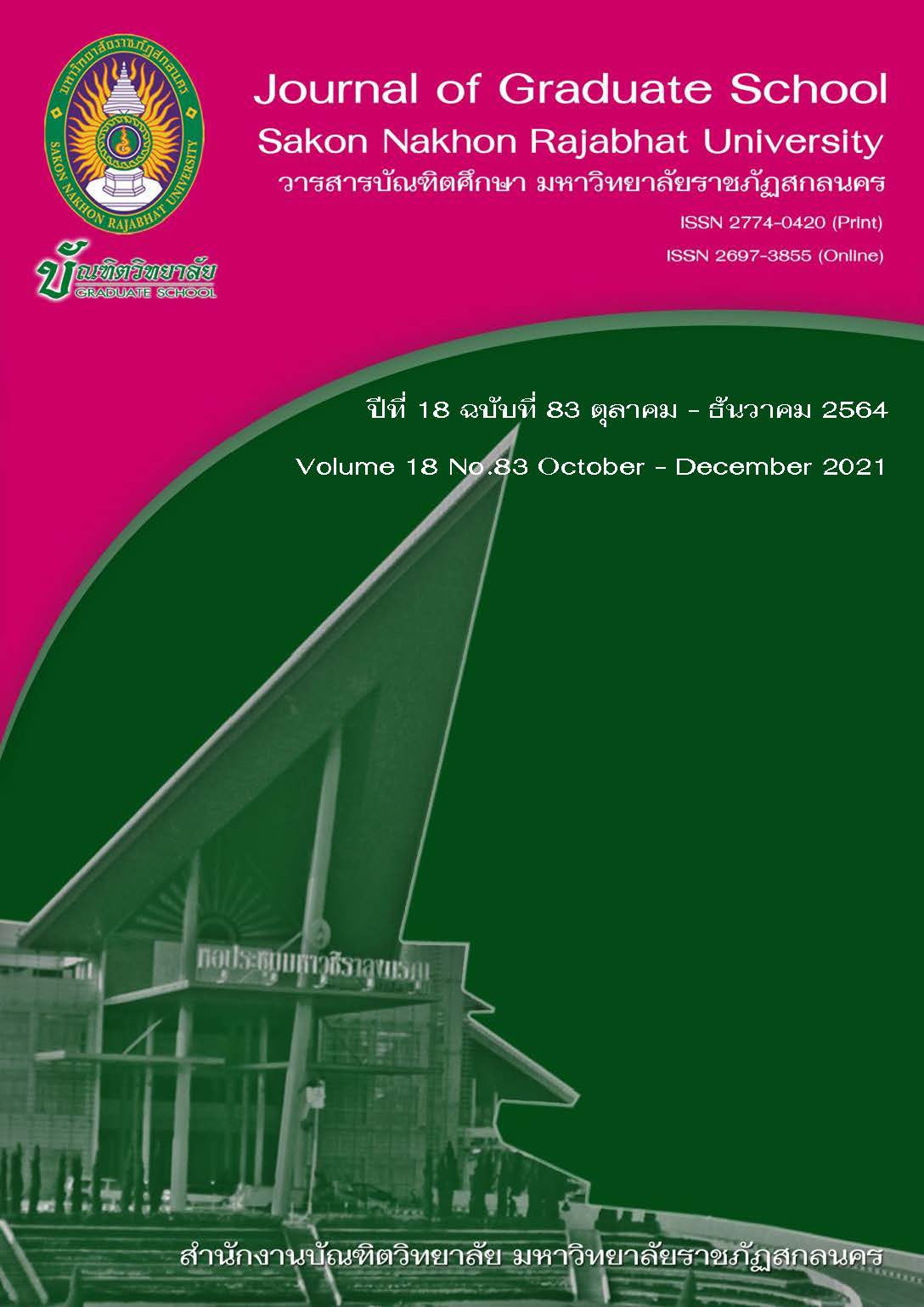การกำหนดประชากรและกลุ่มตัวอย่างในงานวิจัย
Keywords:
Population, Sample GroupsAbstract
A population refers to the entire group of human beings or non-human entities chosen for participation in a study or each unit of interest to researchers. A population for a research study may comprise groups of living and non-living things, such as a person, a group of people, organizations, administrative agencies, animals, objects, etc. The important factors determining a sample size in the research comprised at least three factors: a reliability level, and a degree of accuracy of the estimated statistical values, and a distribution of population groups. In general, the sample sizes can be determined using computer programs and sample size tables. A sample group is a group that is drawn from a population to represent a research study. The two main methods of sampling for research studies were: Non-Probability Sampling and Probability Sampling.
References
กัลยา วาณิชย์บัญชา. (2559). สถิติสำหรับงานวิจัย. (พิมพ์ครั้งที่ 10). กรุงเทพฯ: ห้างหุ้นส่วนจำกัด สามลดา.
ชาย โพธิสิตา. (2556). ศาสตร์และศิลป์แห่งการวิจัยเชิงคุณภาพ. กรุงเทพฯ: อัมรินทร์พริ้นติ้งแอนด์พับลิซซิ่ง.
เทพศักดิ์ บุณยรัตพันธุ์. (2555). เอกสารการเรียนรู้การทำวิจัยด้วยตนเอง. (พิมพ์ครั้งที่ 3). นนทบุรี: สถาบันวิจัยและพัฒนา มหาวิทยาลัยสุโขทัยธรรมาธิราช.
ธานินทร์ ศิลป์จารุ. (2557). การวิจัยและวิเคราะห์ข้อมูลทางสถิติด้วย SPSS และ AMOS. (พิมพ์ครั้งที่ 15). บริษัท เอส. อาร์ พริ้นติ้ง แมสโปรดักส์ จำกัด.
ธีรวุฒิ เอกะกุล. (2543). ระเบียบวิธีวิจัยทางพฤติกรรมศาสตร์และสังคมศาสตร์. อุบลราชธานี: สถาบันราชภัฎอุบลราชธานี.
สถาบันวิจัยและพัฒนา มหาวิทยาลัยสุโขทัยธรรมาธิราช. (2555). เอกสารการเรียนรู้การทำวิจัยด้วยตนเอง. (พิมพ์ครั้งที่ 3). นนทบุรี: โรงพิมพ์มหาวิทยาลัยสุโขทัยธรรมาธิราช.
Patton, MQ. (1990). Qualitative Evalution and Research Methods. (2nd ed). Newbury Park. CA: Sage.
Downloads
Published
How to Cite
Issue
Section
License
บทความทุกบทความที่ตีพิมพ์ในวารสารบัณฑิตศึกษา มหาวิทยาลัยราชภัฏสกลนคร ถือว่าเป็นลิขสิทธิ์ของบัณฑิตวิทยาลัย มหาวิทยาลัยราชภัฏสกลนคร










